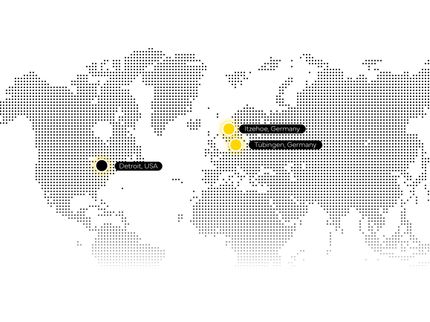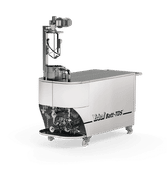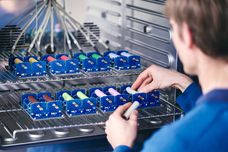Safe Lithium Batteries with a Long Service Life
Advertisement
With the help of new materials and additional improvements, researchers at Siemens have managed to make lithium-ion batteries safer and extend their service life. As part of the joint research project Intrinsically Safe Battery (EiSiBatt), which is funded by the German Ministry for Economic Affairs and Energy, the engineers developed a new cell chemistry until it was sufficiently mature for general application. As a result, it is now possible to create lithium-ion batteries that are very safe, even when they are overcharged, and that last for a much higher number of charge-discharge cycles (20,000) than the previous top value of around 5,000.
Lithium-ion batteries are very attractive energy storage systems, due to their high energy densities. In Siemens products alone, their areas of application range from small energy storage systems for hearing aids to medium-size storage systems for cranes and machine tools, and large storage systems for power grids.
The anodes of the new battery cells do not consist of graphite, as is usually the case, but of lithium titanate, while the cathodes are made of lithium iron phosphate instead of a lithium ¬metal oxide. In addition, scientists at Siemens' global research unit Corporate Technology in Erlangen have developed a model that simulates the behavior of battery systems in which hundreds of the new cells are interconnected. This is the case, for example, with compact and large storage systems.
After numerous measurements and simulations, the scientists managed to understand the batteries' behavior and to describe it mathematically. The model not only encompasses the batteries' electrical behavior, but also their mechanical and thermal behavior. The simulations enabled to scientists to find out how the new batteries' output and energy content are affected when the batteries are used to stabilize power networks or regulate frequencies, for example.
Facilis A team of engineers at Drive Technologies in Chemnitz developed the associated battery management system, which controls the cells' charge level. To ensure a smooth interaction, the engineers used components available from Siemens for the system concept. For example, a Simotion control system analyzes the cells' voltage and temperature. This enables the software to take on additional tasks, such as when the battery is incorporated into a power grid or a drive network.
The new cells might give a variety of Siemens business areas a competitive edge. A demonstrator has already been created with which engineers can test various possible applications. The project's participants also included specialists from the specialty chemicals company Clariant, the battery manufacturer Leclanché, and the Centre for Solar Energy and Hydrogen Research Baden-Württemberg (ZSW).
Other news from the department science
These products might interest you
Most read news
More news from our other portals
See the theme worlds for related content
Topic World Battery Technology
The topic world Battery Technology combines relevant knowledge in a unique way. Here you will find everything about suppliers and their products, webinars, white papers, catalogs and brochures.

Topic World Battery Technology
The topic world Battery Technology combines relevant knowledge in a unique way. Here you will find everything about suppliers and their products, webinars, white papers, catalogs and brochures.


































































